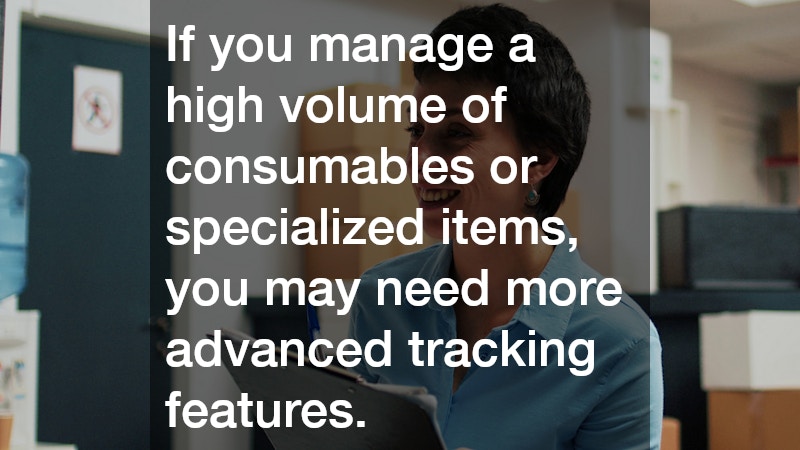
Managing medical supplies efficiently is critical to the smooth operation of any healthcare facility. Whether it’s a small clinic, a large hospital, or a specialty care center, having the right tools in place can mean the difference between streamlined service and operational chaos. One such essential tool is medical inventory software.
This specialized software is designed to help healthcare providers track, manage, and optimize their medical supplies and equipment. However, with countless options on the market, choosing the right medical inventory software can be overwhelming.
Here’s a comprehensive guide to help you make an informed decision that aligns with your operational needs, budget, and compliance requirements.
Understand Your Facility’s Specific Needs
Before diving into product comparisons, start with a clear understanding of your facility’s unique inventory needs. Consider factors such as:
-
Size of your facility: A multi-location hospital system will have far different requirements than a small outpatient clinic.
-
Volume and variety of supplies: If you manage a high volume of consumables or specialized items, you may need more advanced tracking features.
-
Staff roles and responsibilities: Who will use the software? Administrative staff, nurses, inventory managers, or a combination? Choose software that suits all intended users’ skill levels.
By assessing your current workflows, bottlenecks, and future growth plans, you’ll be in a stronger position to find a solution that truly fits.
Look for Essential Features
Not all inventory software is created equal. The right medical inventory software should offer a blend of fundamental and advanced features to support your inventory management goals. Some must-have features include:
-
Real-Time Tracking: Ensure the software updates inventory levels in real-time to avoid shortages or overstock.
-
Barcode/RFID Scanning: These tools streamline check-ins, check-outs, and audits, reducing manual errors.
-
Expiration Date Tracking: Helps prevent waste and ensures patient safety by alerting staff before items expire.
-
Automated Reordering: Automatically generate purchase orders when stock falls below minimum levels.
-
Regulatory Compliance: Ensure the software adheres to HIPAA, FDA, and other healthcare regulations.
-
Multi-location Support: If you manage several sites, this is a must-have feature.
-
Analytics and Reporting: Data insights help you make better purchasing and usage decisions.
Additionally, integration with your Electronic Health Records (EHR) or Enterprise Resource Planning (ERP) systems can add significant value.
Consider Cloud vs. On-Premise Solutions
Medical inventory software is typically available in either cloud-based or on-premise versions. Each has its own pros and cons:
-
Cloud-Based: Accessible from anywhere with internet access, these systems often offer automatic updates and backups. They are generally more scalable and require less IT infrastructure.
-
On-Premise: These systems are hosted locally on your servers, giving you more control over security and customization but often at a higher upfront cost and ongoing maintenance burden.
Your choice should depend on your facility’s size, IT capabilities, budget, and need for data accessibility.
Evaluate Usability and Training
No matter how feature-rich a system is, if it’s not user-friendly, adoption will suffer. Look for software with an intuitive interface and a short learning curve. Additionally, check whether the vendor provides:
-
Training for staff
-
Onboarding support
-
Access to a help center or knowledge base
-
Responsive customer support
An easy-to-use system will reduce training time and minimize the risk of user error, especially in fast-paced healthcare environments.
Consider Costs and ROI
Medical inventory software is an investment, and while upfront costs are important, they shouldn’t be your only consideration. Evaluate the total cost of ownership, which includes:
-
License or subscription fees
-
Setup and training costs
-
Ongoing maintenance or support fees
-
Hardware costs (if applicable)
Balance these against the potential savings from reduced waste, fewer stockouts, time saved in inventory management, and better compliance. Often, the right solution pays for itself over time through improved efficiency and reduced errors.
Prioritize Compliance and Security
Healthcare facilities must comply with strict regulatory standards. Your software should have built-in features to support:
-
HIPAA compliance for handling sensitive data
-
Audit trails to track changes and user activity
-
Secure access controls and user permissions
-
Data encryption and secure backups
Security isn’t just a technical issue—it’s a legal one. Don’t overlook this crucial aspect when making your decision.
Final Thoughts
Choosing the right medical inventory software is a strategic decision that can significantly impact the efficiency, safety, and profitability of your healthcare organization. By clearly understanding your needs, evaluating features, and carefully considering vendor support and compliance, you can select a system that supports long-term operational success. Don’t rush the decision—invest the time to find the right solution, and you’ll reap the rewards in improved care quality, cost control, and staff satisfaction.



